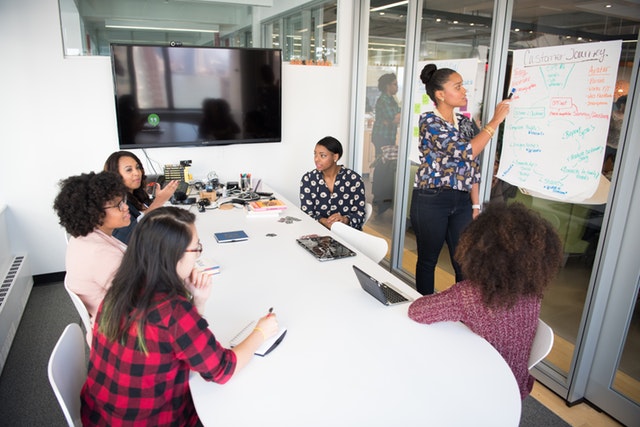Interesting article from The Conversation regarding university tutorial teaching or tutoring quality, students or academics? The glib answer would be neither form of pedagogy, in fact 'andragogy' for adult learners shows that many should be learning together as students, not through teacher centred direction.
'Research shows students are as good as professors in tutorial teaching
February 19, 2019 5.23pm AEDT
Professors and graduate students are at opposite ends of the university hierarchy in terms of experience, qualifications and pay. But at many universities, both do the same job: they teach tutorials offered in parallel with lectures.
Our research explores whether it makes sense for professors to teach tutorials – and we found it doesn’t. They are no more effective as tutorial instructors than students.
This finding implies that universities can reduce costs or free up professors’ time by asking students to teach more tutorials.
Using professors to teach small groups is expensive, and reducing costs is a central concern given the increases in tuition fees and student debt.
We have studied the costs and benefits of using tutorial instructors with different academic ranks, using data from a Dutch business school that offers four key features. First, tutorials are taught by a wide range of instructors, ranging from bachelor’s students to full professors. Second, the school’s dataset is large enough (we observe more than 12,000 students) to give us enough statistical power to detect even small differences between instructors.
Third, at this business school students are randomly assigned to instructors of different academic ranks, creating a perfect experiment for seeing whether academic rank matters. Finally, we were able to supplement these already excellent data with measures of students’ satisfaction with the course, and students’ earnings and job satisfaction after graduation, for some of these students. This is important since instructors might matter in many ways and we need to cast a wide net to capture a range of student outcomes.
Full professors are also no better than student instructors in improving students’ grades in the next related course or job satisfaction and earnings after graduation. We do, however, find that higher-ranked instructors achieve somewhat better course evaluations, but these differences are small.
These findings are counter-intuitive. Yet they are consistent with the general findings in primary and secondary education that formal education does a poor job at predicting who teaches well.
What could be the reason why all the extra qualification and experience of professors does not translate into better results for their students? The content of tutorials might be adjusted in a way that students can easily teach them. Further, lower-ranked instructors may compensate for their lack of experience by being better able to relate to students and being more motivated.
There are, of course, reasons why universities might not want to exclusively rely on student instructors. Students might not be able to teach some more technically advanced master’s courses.
There might be some research-inactive but tenured professors whose most valuable use of time is tutorial teaching. And, as with other research that rely on data from one institution, future studies need to show whether our results hold in other universities as well.
But even if these studies uncover some benefits to students of being taught by a professor, we would be surprised if these are worth the extra costs.'
Unclear what is quality teaching and learning? Higher education or universities put great importance upon narrow and high-level specialised knowledge exemplified by a doctorate, i.e. content or subject matter expert. Further, the vocational Certificate IV of Training & Assessment TAE40116 is included on many job descriptions as a desirable teaching qualification and meanwhile ‘real world’ experience can be ignored by institutions and/or embellished by the beholder (unlike the ID points system, all factors are not taken into account).
Related issues here, theory of teaching and learning, pedagogy (for children) is cited but for adults we should be speaking about andragogy. Andragogy of adult education focuses upon adults’ need for knowledge, motivation, willingness, experience, self-direction and task-based learning.
Good instructional or learning design for adult centred learning:
Another issue to emerge has been that of 'ID Instructional Design' on behalf of university teachers, but not based upon subject matter or teach/learning skills (when ID is implicit for any competent teacher).
Finally, explaining in terms of cost (cutting or savings) may seem mercenary when high fees are now the norm for most students.
 |
| Student Tutorial Teachers or Professors? (Copyright image Pexels) |
'Research shows students are as good as professors in tutorial teaching
February 19, 2019 5.23pm AEDT
Professors and graduate students are at opposite ends of the university hierarchy in terms of experience, qualifications and pay. But at many universities, both do the same job: they teach tutorials offered in parallel with lectures.
Our research explores whether it makes sense for professors to teach tutorials – and we found it doesn’t. They are no more effective as tutorial instructors than students.
This finding implies that universities can reduce costs or free up professors’ time by asking students to teach more tutorials.
Measuring instructors’ effectiveness
We conducted a survey about tutorial instruction in OECD universities. Our results show that tutorials are used in 63% of OECD universities. At 25% of these institutions, tutorials are taught by students, 29% by professors and 46% by a mixture of the two.Using professors to teach small groups is expensive, and reducing costs is a central concern given the increases in tuition fees and student debt.
We have studied the costs and benefits of using tutorial instructors with different academic ranks, using data from a Dutch business school that offers four key features. First, tutorials are taught by a wide range of instructors, ranging from bachelor’s students to full professors. Second, the school’s dataset is large enough (we observe more than 12,000 students) to give us enough statistical power to detect even small differences between instructors.
Third, at this business school students are randomly assigned to instructors of different academic ranks, creating a perfect experiment for seeing whether academic rank matters. Finally, we were able to supplement these already excellent data with measures of students’ satisfaction with the course, and students’ earnings and job satisfaction after graduation, for some of these students. This is important since instructors might matter in many ways and we need to cast a wide net to capture a range of student outcomes.
Students just as effective
Overall, our results show that lower-ranked instructors teach tutorials as effectively as higher-ranked ones. The most effective instructors – postdoctoral researchers – increase students grades by less than 0.02 points on a 10-point grade scale compared with student instructors. The differences between all other instructor types, from student instructor and full professor, is smaller than that.Full professors are also no better than student instructors in improving students’ grades in the next related course or job satisfaction and earnings after graduation. We do, however, find that higher-ranked instructors achieve somewhat better course evaluations, but these differences are small.
These findings are counter-intuitive. Yet they are consistent with the general findings in primary and secondary education that formal education does a poor job at predicting who teaches well.
What could be the reason why all the extra qualification and experience of professors does not translate into better results for their students? The content of tutorials might be adjusted in a way that students can easily teach them. Further, lower-ranked instructors may compensate for their lack of experience by being better able to relate to students and being more motivated.
Key implication
The implications of our findings are obvious. Universities can free up resources by not asking their most expensive staff to do a job that students can do equally well. We show that the business school we study can reduce the overall wages they pay to tutorial instructors by 50% if they only employ student instructors.There are, of course, reasons why universities might not want to exclusively rely on student instructors. Students might not be able to teach some more technically advanced master’s courses.
There might be some research-inactive but tenured professors whose most valuable use of time is tutorial teaching. And, as with other research that rely on data from one institution, future studies need to show whether our results hold in other universities as well.
But even if these studies uncover some benefits to students of being taught by a professor, we would be surprised if these are worth the extra costs.'
Unclear what is quality teaching and learning? Higher education or universities put great importance upon narrow and high-level specialised knowledge exemplified by a doctorate, i.e. content or subject matter expert. Further, the vocational Certificate IV of Training & Assessment TAE40116 is included on many job descriptions as a desirable teaching qualification and meanwhile ‘real world’ experience can be ignored by institutions and/or embellished by the beholder (unlike the ID points system, all factors are not taken into account).
Related issues here, theory of teaching and learning, pedagogy (for children) is cited but for adults we should be speaking about andragogy. Andragogy of adult education focuses upon adults’ need for knowledge, motivation, willingness, experience, self-direction and task-based learning.
Good instructional or learning design for adult centred learning:
- broad and deep needs analysis based on learners’ knowledge, expertise and real skill gaps
- motivated when they have input and some control over learning, activities and outcomes
- participate in learner centred activities, interaction and social learning
- opportunities to contribute knowledge, expertise and reflect on their business practice
- contribution to and management of learning activities through tasks and problem solving; post course too.
Another issue to emerge has been that of 'ID Instructional Design' on behalf of university teachers, but not based upon subject matter or teach/learning skills (when ID is implicit for any competent teacher).
Finally, explaining in terms of cost (cutting or savings) may seem mercenary when high fees are now the norm for most students.


